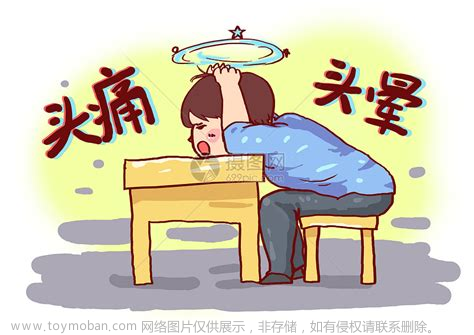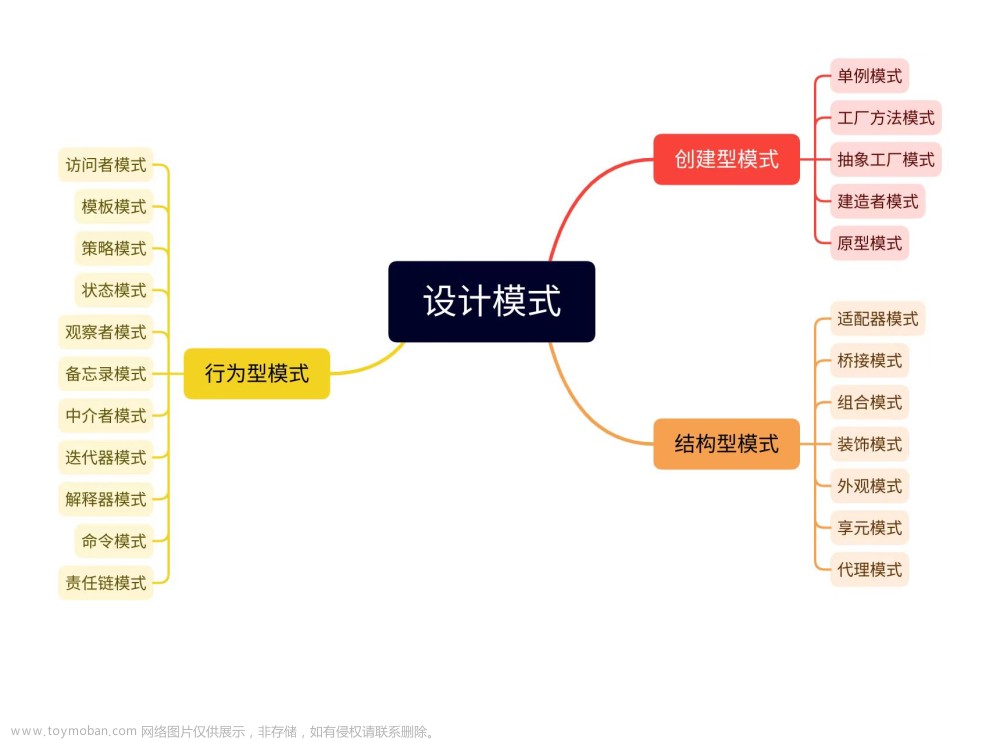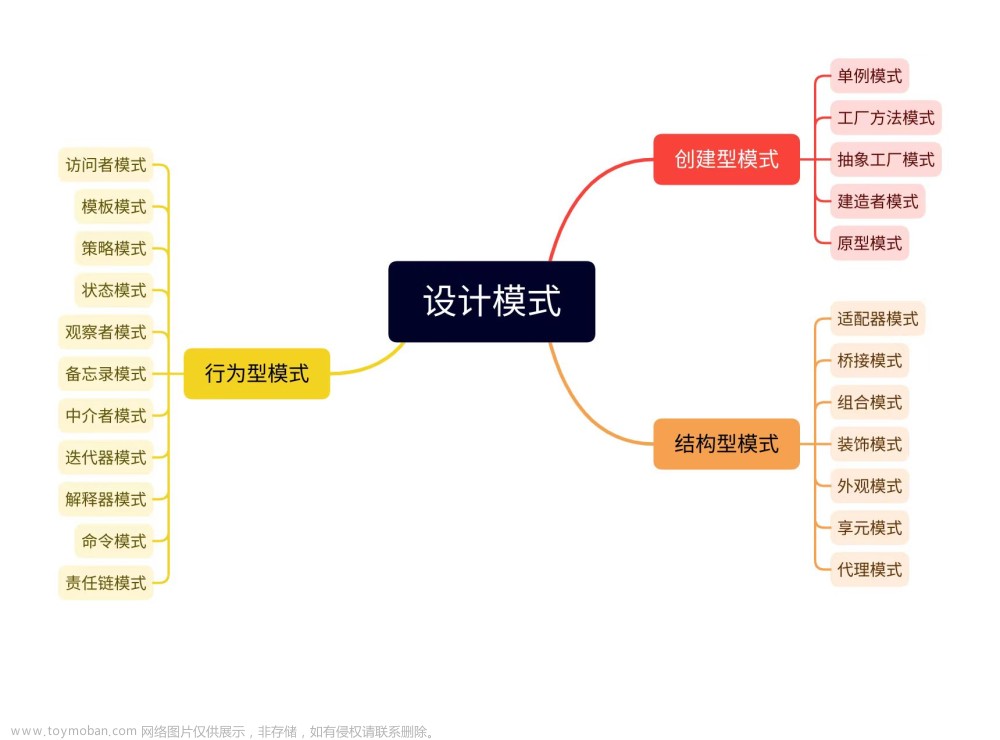工厂模式(Factory Pattern)是一种常见的设计模式,它可以帮助我们简化对象创建的过程,将对象的创建与使用分离,提高代码的可维护性和可扩展性。在Java中,工厂模式通常分为简单工厂模式(Simple Factory Pattern)和工厂方法模式(Factory Method Pattern)两种。
简单工厂模式是一种基本的工厂模式,它通过一个工厂类来创建多个产品类。简单工厂模式通常用于创建简单的对象,例如创建字符串、数字、日期等。
下面是一个简单的简单工厂模式的示例:
public class SimpleFactory {
public static Object createObject(String type) {
if (type.equals("String")) {
return new String("Hello World");
} else if (type.equals("Integer")) {
return new Integer(123);
} else if (type.equals("Date")) {
return new Date();
} else {
return null;
}
}
}
在这个例子中,SimpleFactory类定义了一个静态方法createObject,该方法根据传入的类型参数返回一个对象。这个方法根据传入类型的不同返回不同的对象。例如,当传入type为"String"时,createObject方法返回一个字符串对象;当传入type为"Integer"时,返回一个整数对象;当传入type为"Date"时,返回一个日期对象。
通过这个简单的简单工厂模式,我们可以方便地创建各种不同类型的对象。但是,这种模式有一个缺点:它限制了产品的数量。如果需要创建更多的产品类型,我们需要在SimpleFactory类中添加更多的静态方法。而且,每个产品类都需要在SimpleFactory类中定义一个对应的静态方法。这会导致代码重复,难以维护。
为了解决这个问题,我们可以使用工厂方法模式。工厂方法模式是一种更加灵活的工厂模式,它允许我们定义多个工厂方法来创建不同的产品类。
下面是一个简单的工厂方法模式的示例:文章来源:https://www.toymoban.com/news/detail-638547.html
public interface Product {
void use();
}
public class StringProduct implements Product {
public void use() {
System.out.println("Hello World");
}
}
public class IntegerProduct implements Product {
public void use() {
System.out.println(123);
}
}
public class DateProduct implements Product {
public void use() {
System.out.println(new Date());
}
}
在这个例子中,我们定义了一个Product接口和一个StringProduct、IntegerProduct、DateProduct类来实现该接口。这些类都实现了use方法,用于使用产品。然后,我们定义了一个createProduct方法来创建不同的产品类。例如,当调用createProduct(“String”)时,会返回一个StringProduct对象;当调用createProduct(“Integer”)时,会返回一个IntegerProduct对象;当调用createProduct(“Date”)时,会返回一个DateProduct对象。文章来源地址https://www.toymoban.com/news/detail-638547.html
到了这里,关于什么是Java中的工厂模式?的文章就介绍完了。如果您还想了解更多内容,请在右上角搜索TOY模板网以前的文章或继续浏览下面的相关文章,希望大家以后多多支持TOY模板网!









